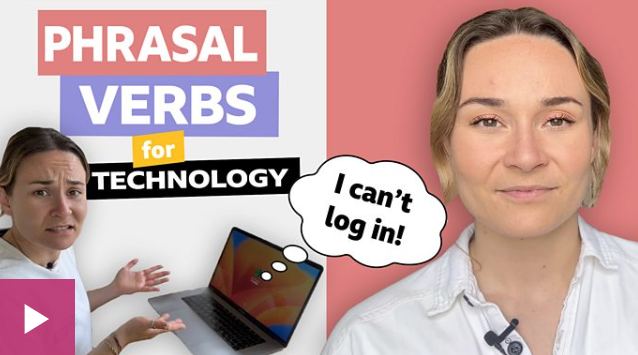Introduction
Georgie teaches you some phrasal verbs that can be used to talk about technology.
Phrasal verbs mentioned
log/sign in
enter your username and password to access a computer system
- I can’t log in because I’m struggling to remember my password!
log/sign out
to exit or end your computer session
- Remember to log out of your online banking after use so no one else can access your details.
sign up
register or create an account for a service or website
- If you want to be the first to hear about concert tickets, sign up to the mailing list.
scroll through
move through information or images on a screen with a dragging or swiping motion
- I want to read more books, but first I need to break the habit of scrolling through social media whenever I’m bored.
turn/switch (something) on
give power to, or activate a device or system
- I was bored, so I turned the TV on and started watching.
turn/switch (something) off
stop the power of a device or system
- Remember to turn off your computer before you leave the office.
turn (something) up
increase the volume or intensity of something
- I can’t hear the TV – can you turn it up?
turn (something) down
decrease the volume or intensity of something
- The party next door is so noisy. Shall we ask them to turn the music down?
set (something) up
start or prepare a programme or device so that you can use it
- My grandparents have finally got wi-fi, but I need to help them set it up.
TOP TIPS!
- If you see the word ‘something’, it usually means the verb requires an object.
- If ‘something’ is in the middle of the phrasal verb, it means that it can be separated by the object (but doesn’t have to be).
- If ‘something’ is at the end of the phrasal verb, it means it cannot be separated.
- When a pronoun, e.g. him, her, them, is the object of a separable phrasal verb, it must go between the verb and the particle.
